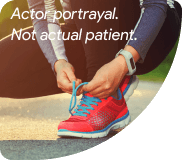How do you manage sHTG?
Treatment is specific to the person and the cause.
Many possible causes of severe hypertriglyceridemia (sHTG) exist. And each person may have a different mix of causes. As a result, a treatment that works for someone else may not work for you.1
That’s why it is important to have a thorough, honest conversation with your doctor and other members of your healthcare team. Work with them to identify possible causes of sHTG, such as the ones listed below and explored in more detail on the causes page.

Identify any medications you take that cause high triglycerides
Tell your doctor about any prescription medications, over-the-counter medications, supplements, herbal remedies, or other remedies you use. You may need to change medications or adjust your dosage.
See if any of your medical conditions cause high triglycerides
Some medical conditions may increase triglyceride levels.1,3,11 You and your healthcare team should explore whether you have any of them.
Many people with sHTG have diabetes, excess weight/obesity, metabolic syndrome, or insulin resistance. Often, better control of these conditions reduces triglyceride levels.1

If you have familial chylomicronemia syndrome (FCS), you need a different approach
In people with FCS, medications to lower triglyceride levels often have little to no effect on triglyceride levels. It is important for people with FCS to follow a specific diet to prevent triglyceride levels from becoming dangerously high.8
Nutrition and lifestyle
Often, changes to how you live and what you eat can reduce triglyceride levels. This includes1,9,11:
- Reducing alcohol consumption
- Losing weight
- Changing the foods you eat
- Physical activity
- Support from a registered dietitian, exercise specialist, or counselor



